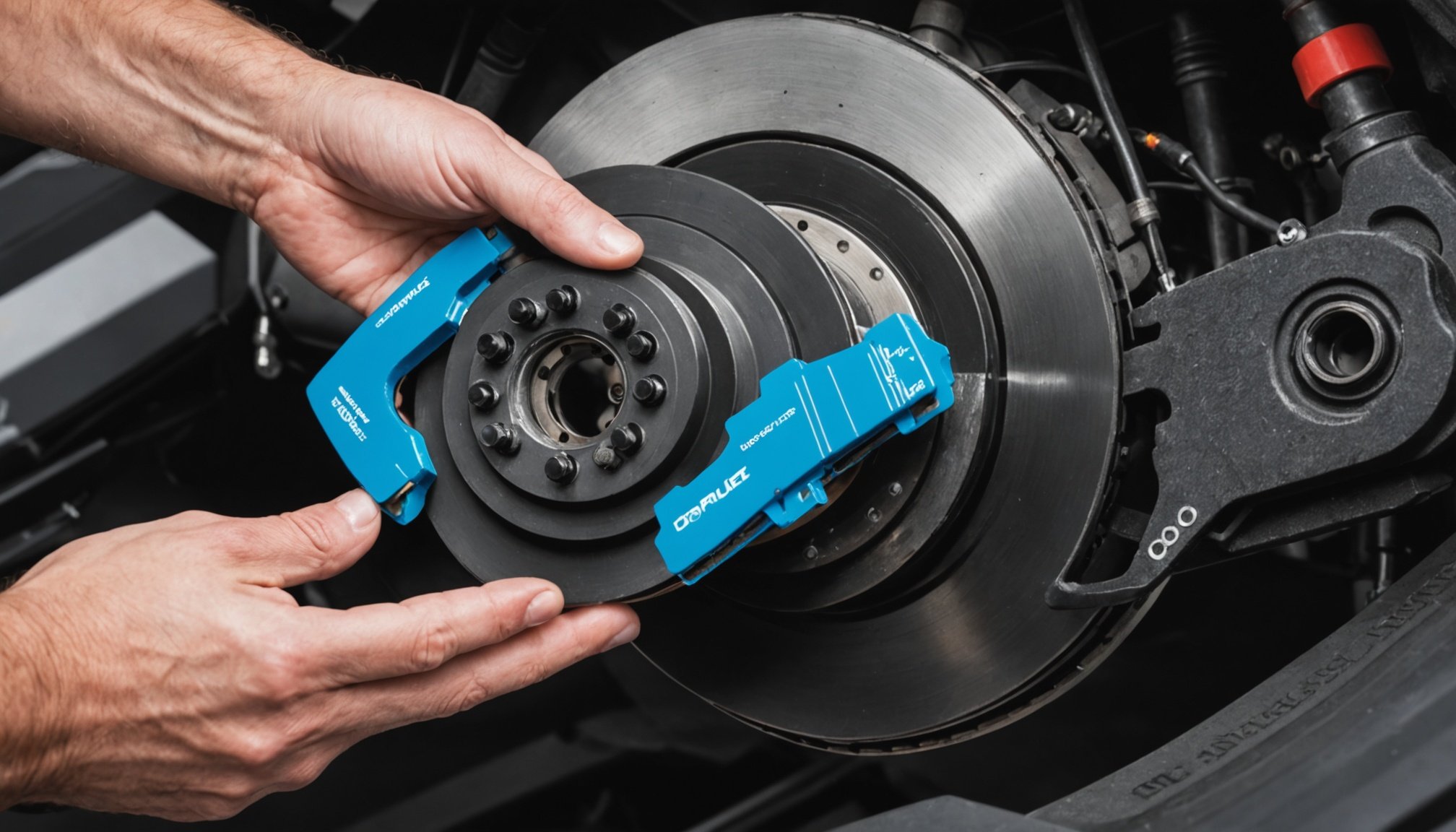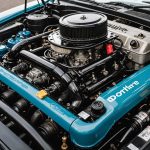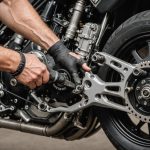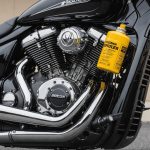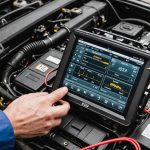The Ultimate Guide to Brake Force Distribution: Expert Strategies for Fine-Tuning Your Car’s Electronic System with New Brake Pads
Understanding Brake Force Distribution: The Basics
When it comes to optimizing your car’s performance, one of the most critical aspects to focus on is the brake force distribution. This is particularly important for those who are into car tuning or simply want to enhance their vehicle’s braking performance. Here, we’ll delve into the world of brake force distribution, exploring how it works, its importance, and how you can fine-tune it for your car.
How Brake Force Distribution Works
Brake force distribution is the process of allocating the braking power between the front and rear axles of your vehicle. In traditional vehicles, this is often managed mechanically, but with the advent of advanced electronic systems, the process has become more sophisticated. Modern cars, especially those with electronic brake systems like brake-by-wire, can dynamically adjust the brake force distribution based on various parameters such as speed, load, and road conditions[1].
Topic to read : Ultimate handbook: optimal steering fluid inspection frequency for high-mileage vehicles to prevent steering system breakdown
For instance, in a typical driving scenario, more braking force is applied to the front axle because it bears the brunt of the vehicle’s weight during deceleration. However, this can be adjusted based on the specific needs of the driver. In high-performance vehicles or during track days, the brake force distribution might be tweaked to favor the rear axle for better stability and control.
The Role of Regenerative Braking in Modern Vehicles
Regenerative braking is a feature that has become increasingly common in electric and hybrid vehicles. This system captures some of the kinetic energy and converts it back into electrical energy, which is then stored in the battery. This not only enhances the vehicle’s efficiency but also impacts the brake force distribution.
Also to read : Enhance nighttime driving safety: essential tips to ensure your car”s automatic high-beam system works perfectly
Efficacy of Regenerative Braking
The efficacy of regenerative braking varies significantly between different manufacturers and models. For example, Tesla’s system is particularly efficient, capable of decelerating the vehicle up to 0.3G without using the mechanical brakes, thereby maximizing energy recovery, especially in urban driving conditions. Renault’s Megane E-Tech, on the other hand, can recover up to 35 kW of energy[1].
Regenerative braking can significantly impact your vehicle’s autonomy. In urban cycles, it can add up to 20% more range by recovering energy during frequent braking phases.
Adjusting Brake Force Distribution: Modes and Settings
Most modern vehicles, especially electric and hybrid ones, offer various modes to adjust the intensity of regenerative braking and overall brake force distribution.
Modes of Operation
-
Regenerative Braking Modes: Vehicles like the Audi A6 Avant e-tron quattro offer multiple modes such as Automatic Regeneration, Manual Regeneration, and Regeneration on the Accelerator Pedal. These modes allow you to control how much regenerative braking is applied based on your driving style and conditions[3].
-
Driving Modes: Many cars come with different driving modes (e.g., Dynamic, Efficiency, Comfort) that adjust not only the suspension and engine response but also the brake force distribution. For instance, in Dynamic mode, the brake force might be more aggressively distributed to the front axle for better handling during high-performance driving.
-
Manual Adjustments: Some manufacturers, like Hyundai and Kia, provide paddle controls on the steering wheel to adjust the regenerative braking force in real-time. This allows for fine-tuning the vehicle’s behavior according to your preferences and driving conditions[1].
Integrating with Hydraulic Braking Systems
The seamless integration of regenerative braking with traditional hydraulic braking systems is a technical challenge that manufacturers must address.
Advanced Brake-by-Wire Systems
Advanced systems use electronic brake-by-wire technology to finely manage the distribution between regenerative and mechanical braking. This ensures optimal energy recovery while maintaining optimal braking performance in all circumstances. For example, Volkswagen has developed systems that can anticipate braking needs using GPS and sensor data, further optimizing energy recovery[1].
Practical Tips for Fine-Tuning Your Brake System
Here are some practical tips to help you fine-tune your car’s brake system for improved performance:
Choosing the Right Brake Pads
- High-Performance Brake Pads: For track days or high-performance driving, consider using high-performance brake pads that can handle the increased heat and friction.
- Example: BMW’s high-performance brake pads are designed to provide consistent braking performance even under extreme conditions.
Adjusting Brake Fluid Pressure
- Monitoring Brake Fluid: Ensure your brake fluid is at the recommended level and change it periodically to maintain optimal braking performance.
- Tip: Use a brake fluid pressure gauge to monitor the pressure, especially if you’re adjusting the brake force distribution.
Balancing Front and Rear Brake Force
- Front vs. Rear Axle: Adjust the brake force distribution to favor the front or rear axle based on your driving needs.
- Example: For track driving, you might prefer a slightly rear-biased setup for better stability during hard braking.
Using Advanced Electronic Systems
- Brake-by-Wire Systems: If your vehicle is equipped with a brake-by-wire system, use the settings provided to adjust the brake force distribution dynamically.
- Example: The Audi A6 Avant e-tron quattro allows you to adjust the regenerative braking force in real-time, which can be particularly useful in varying driving conditions[3].
Comparative Analysis of Different Brake Systems
Here’s a comparative table highlighting the key features of different brake systems and their impact on brake force distribution:
| Vehicle Model | Brake System Type | Regenerative Braking Capability | Adjustable Modes | Brake Force Distribution |
|---|---|---|---|---|
| Tesla Model 3 | Electronic Brake-by-Wire | Up to 0.3G without mechanical brakes | Yes, multiple modes | Dynamic adjustment based on speed and load[5] |
| Audi A6 Avant e-tron quattro | Electronic Brake-by-Wire | Up to 220 kW regenerative power | Yes, Automatic, Manual, Accelerator Pedal | Dynamic adjustment based on mode and conditions[3] |
| Volkswagen ID.4 | Electronic Brake-by-Wire | Anticipatory braking using GPS and sensors | Yes, multiple driving modes | Dynamic adjustment based on speed and load[1] |
| BMW M3 | Hydraulic with Electronic Assist | Limited regenerative braking | Yes, multiple driving modes | Fixed distribution with electronic assist[2] |
Real-World Examples and Anecdotes
Tesla’s Regenerative Braking
Tesla owners often praise the seamless integration of regenerative braking into their driving experience. For instance, one owner noted, “The regenerative braking on my Tesla Model 3 is so intuitive that I rarely need to use the brake pedal in urban driving. It’s like the car is reading my mind and adjusting the braking force accordingly.”
Track Day Tuning
During a track day event, a driver of a BMW M3 adjusted the brake force distribution to favor the rear axle slightly. This adjustment allowed for better stability and control during hard braking, resulting in faster lap times and a more confident driving experience.
Fine-tuning your car’s brake force distribution is a nuanced process that requires a deep understanding of the underlying systems and technologies. By leveraging advanced electronic systems, adjusting regenerative braking modes, and choosing the right brake pads, you can significantly enhance your vehicle’s braking performance.
Final Tips
- Regular Maintenance: Ensure your brake system is well-maintained, including regular checks on brake fluid and pad wear.
- Tip: Always refer to your vehicle’s manual for specific guidelines on adjusting brake force distribution.
- Driving Style: Adjust your driving style according to the brake system settings. For example, in modes with high regenerative braking, you might need to anticipate stops earlier.
- Example: In the Audi A6 Avant e-tron quattro, using the “Regeneration on Accelerator Pedal” mode requires a slight adjustment in driving style to maximize energy recovery without over-relying on the brake pedal[3].
By following these expert strategies and tips, you can transform your driving experience, ensuring your car’s brake system performs at its best whether you’re cruising through the city or pushing the limits on a track day.

